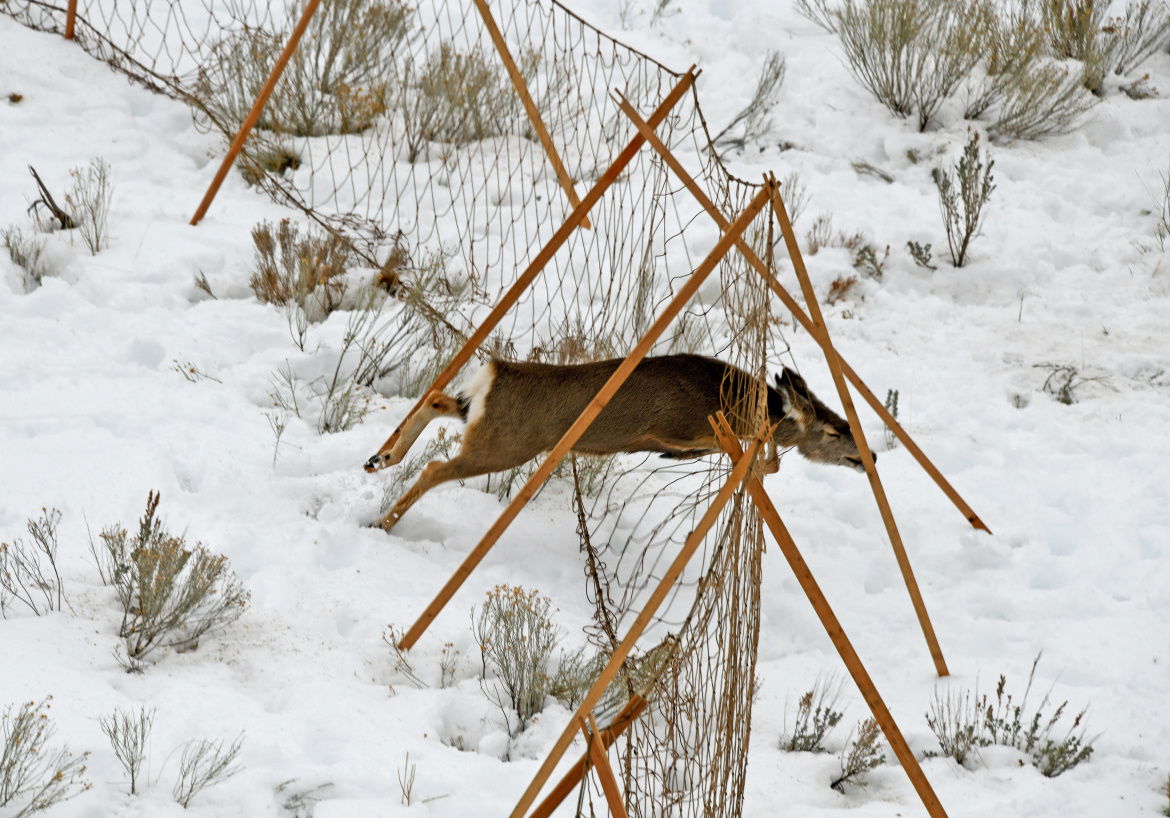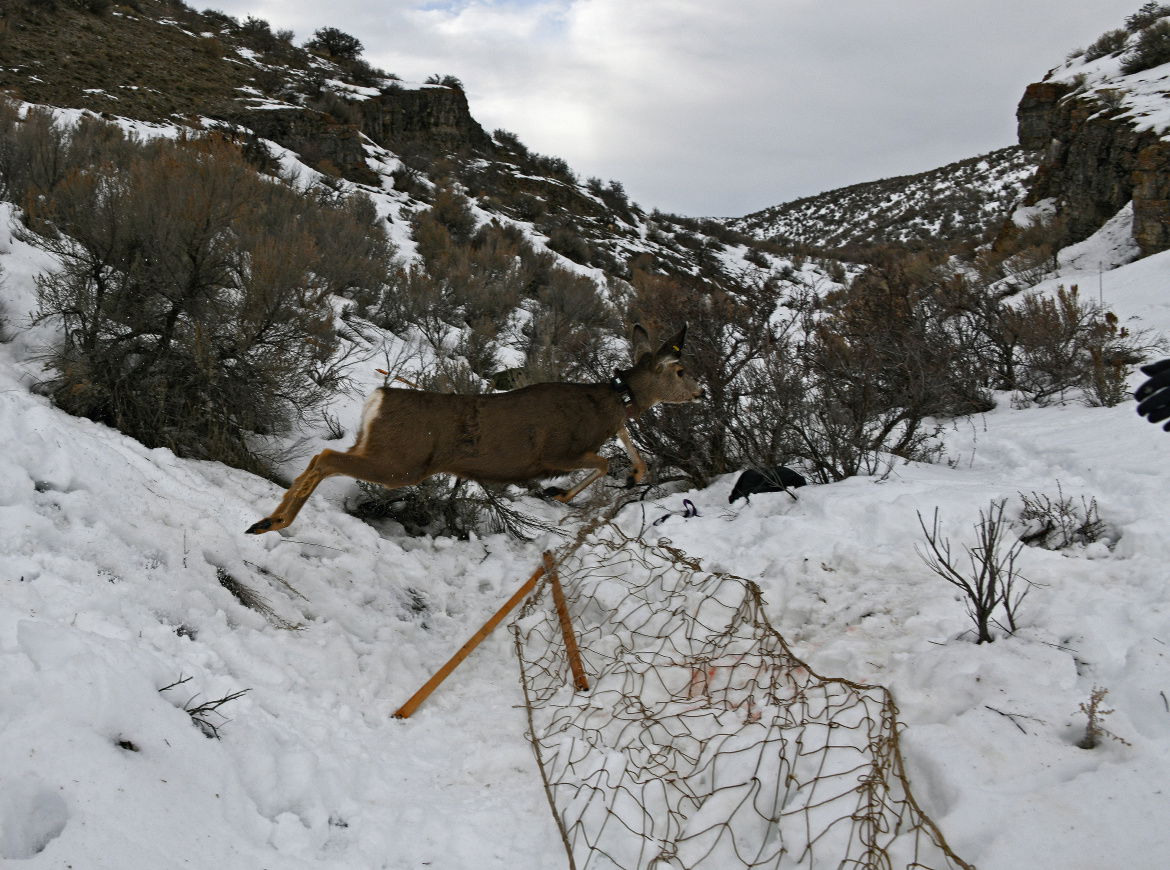Mule deer trapping helps officials assess winter survival
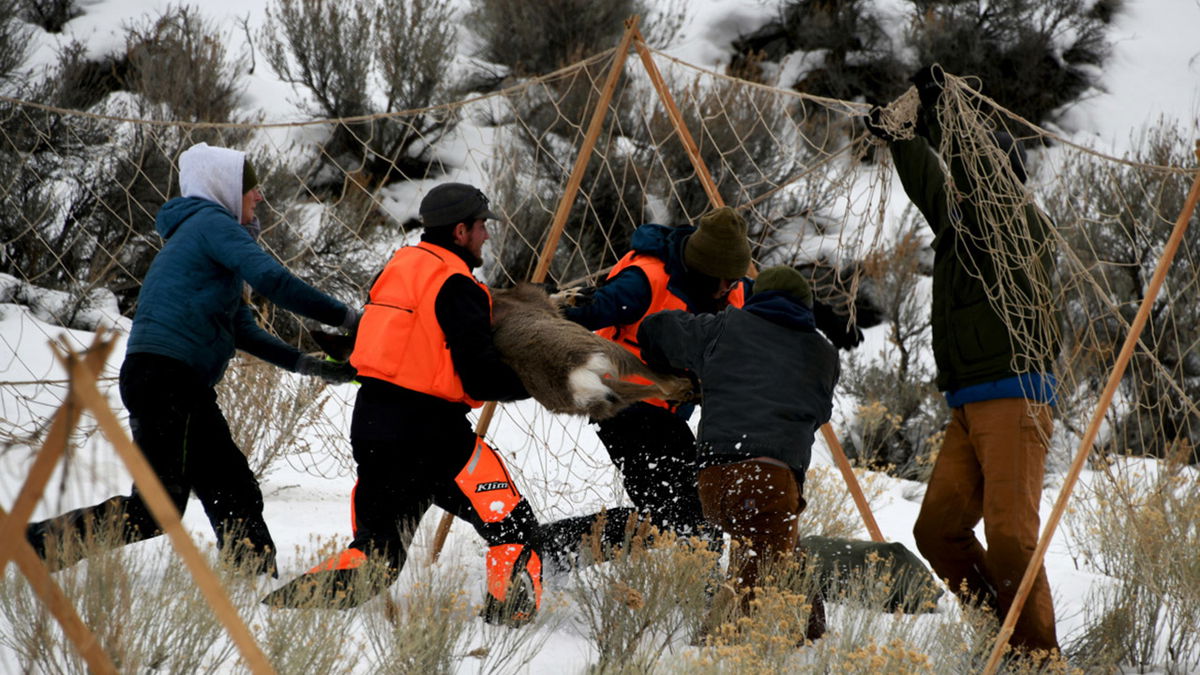
MAGIC VALLEY, Idaho (KIFI) - Fish and Game biologists with the Magic Valley Region are spending time this winter collaring mule deer does and fawns to assess survival over the coming winter months.
Biologists need the data supplied by the GPS collars to make informed recommendations to the Idaho Fish and Game Commission who set upcoming hunting seasons.

After capture, the deer have a blindfold placed over their eyes to calm them while data is collected
Using statistical models, biologists will analyze the data collected from the GPS collars to estimate how many animals survived the winter.
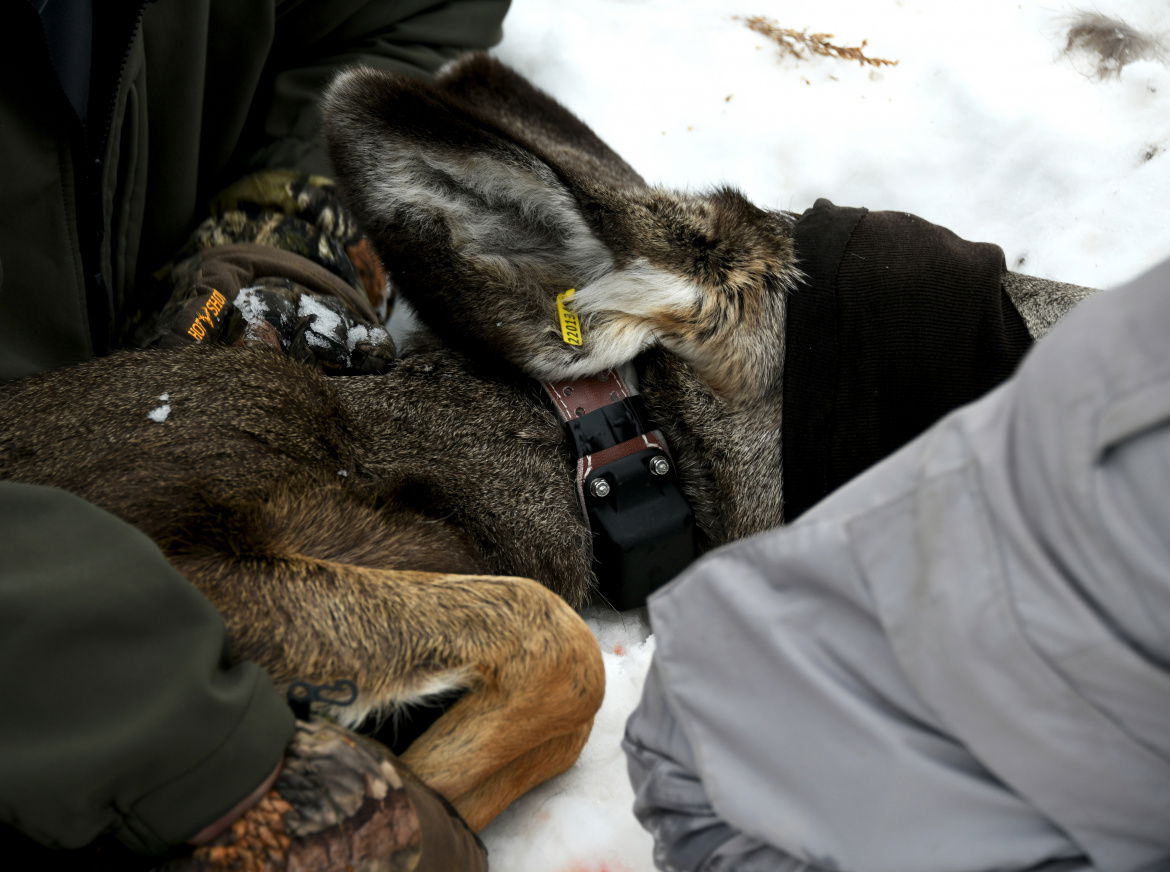
A GPS collar and ear tags are placed on all deer captured during the capture project
Mule deer trapping operations involve a helicopter to drive deer into a capture net where data is collected to monitor seasonal movements, body condition and ultimately long-term survival. Once in the nets the deer can be quickly processed by placing a collar around their necks, ear tags put into both ears, measure leg length to determine growth rates and weight.
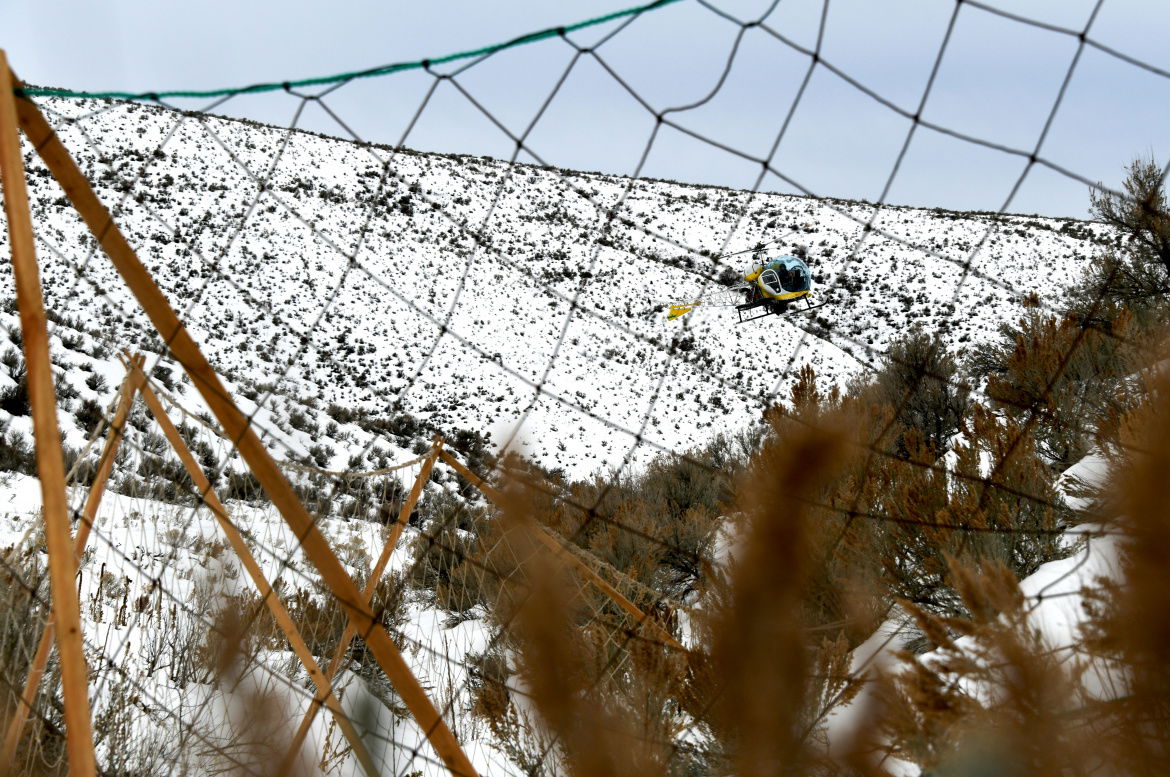
A helicopter brings mule deer into the capture nets
Does may have blood drawn to determine pregnancy, and if time allows, an ultrasound might be conducted on the animal’s hind quarters to determine fat thickness which correlates to its overall health level.
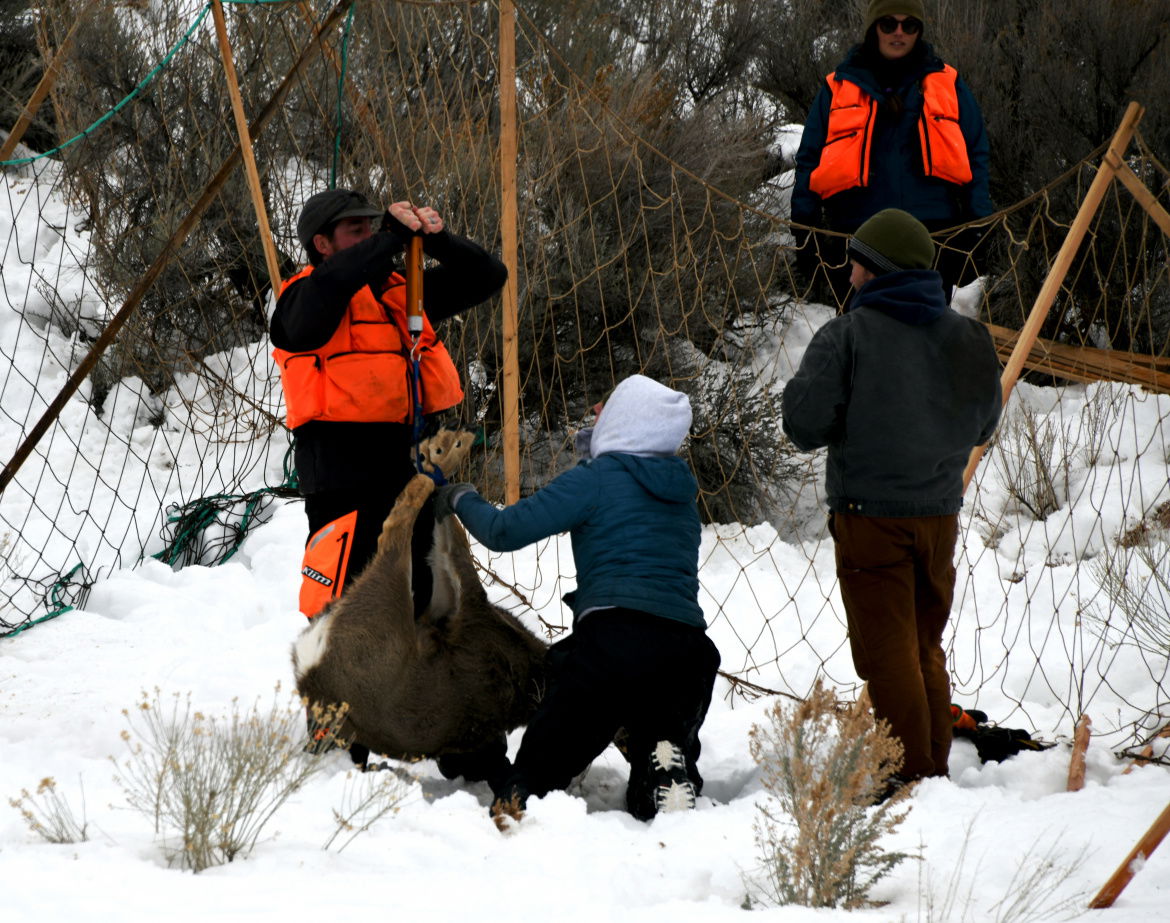
All mule deer are weighed before release as a measure of their health condition
Trapping is typically done in the winter when big game animals are congregated on lower elevation winter ranges.
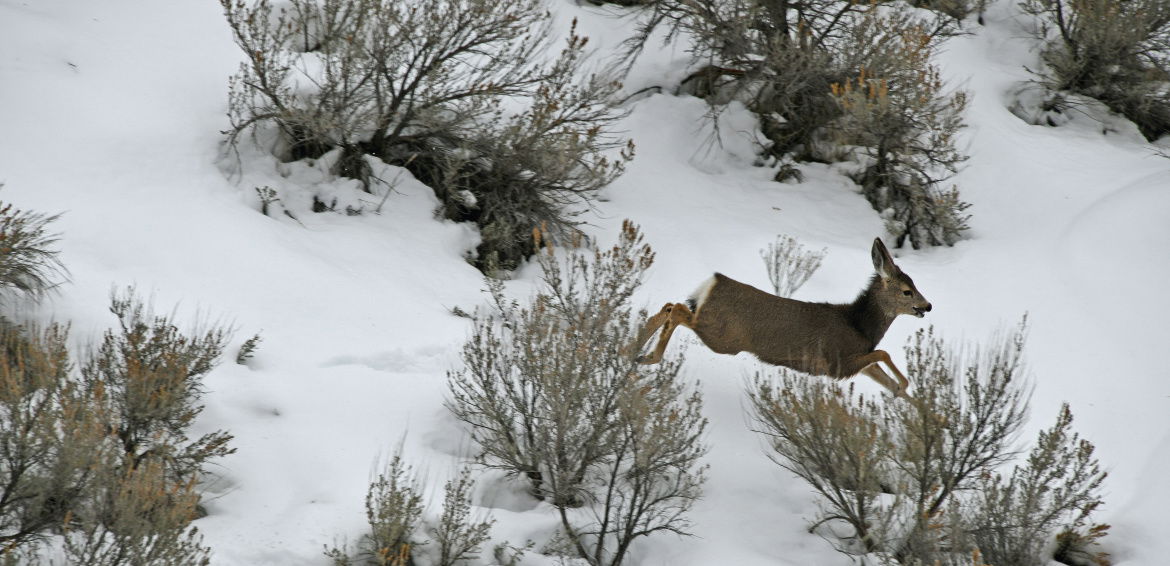
A mule deer fawn prior to capture in large nets
GPS collar data helps biologists form recommendations in years when the winter survival is low and hunting seasons may need to be adjusted to reduce the impact on populations in the fall. Likewise, if winter survival is high, these same biologists may recommend to the Fish and Game Commission that they provide more hunting opportunity due to more animals on the landscape.
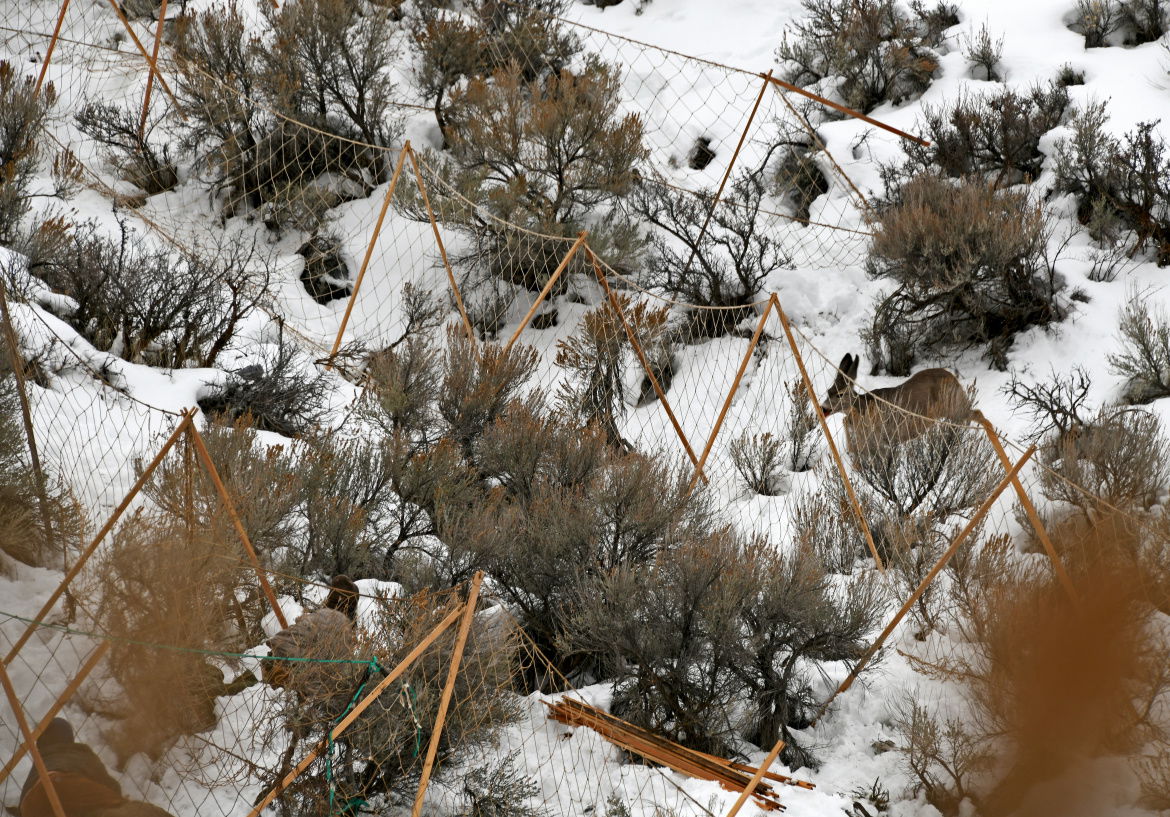
Mule deer about the hit the capture net in the Shirley Creek drainage, Magic Valley Region January 2022
